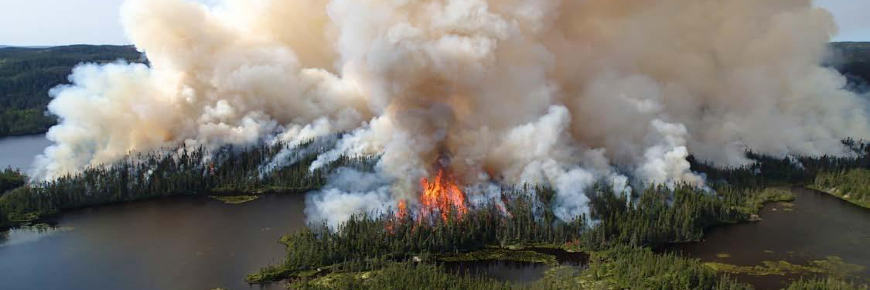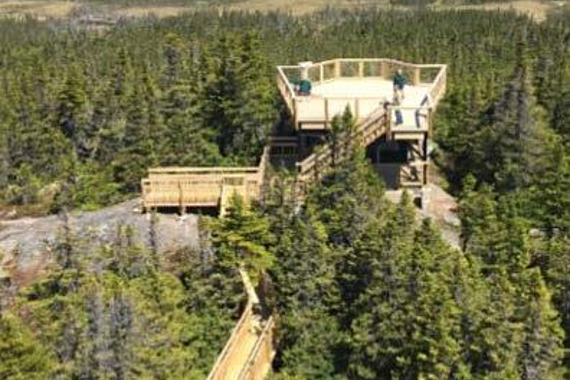
Aerial view of the Spruce Pond prescribed fire, part of a multi-faceted boreal forest restoration project.
Saving the seedlings
Regenerating the forests of Terra Nova National Park
What’s the issue?

Terra Nova National Park faces an ecological challenge that’s common across several parks – namely, a decline in forest health caused by too many hungry moose and too little fire. The predicament is due in part to decisions of the past. First, moose were introduced to Newfoundland in the late 1800s. Since then, the population has thrived in this predator-free environment, which provides tasty hardwood and fir seedlings for their insatiable appetites. In some areas of the park, moose browsing is so intense that trees are simply not regenerating and forests have turned into open fields. Second, aggressive suppression of wildfire from the 1960s to the 1990s disrupted a natural process that’s necessary for forest regeneration. Some forests have become over-mature and weaker as a result. Terra Nova is now taking action to remedy the consequences of these past decisions.
What’s our approach?
- Consult, plan and execute a moose population reduction program to enable regeneration of hardwood and balsam fir seedlings.
- Plant native tree seedlings in areas where moose populations are being reduced.
- Use prescribed fire to restore a minimum of 200 hectares of over-mature black spruce forest.
- Engage local community leaders, partners and youth in forest restoration initiatives.
What’s been accomplished?
- Reduced the moose population by 30 percent from 2013 to 2017, resulting in 25 percent less browsing on hardwood species, and increased densities of balsam fir seedlings (25 percent) and saplings (88 percent).
- Conducted four prescribed fires (2014–2017), covering 190 hectares of black spruce forests.
- Collaborated with Memorial University, provincial government and Miawapukek First Nation in forest restoration activities; re-invented the Activity Centre in Newman Sound; established a Forest Health Pavilion and interpretive trail at Ochre Hill to educate Canadians about boreal forest health.
- Date modified :